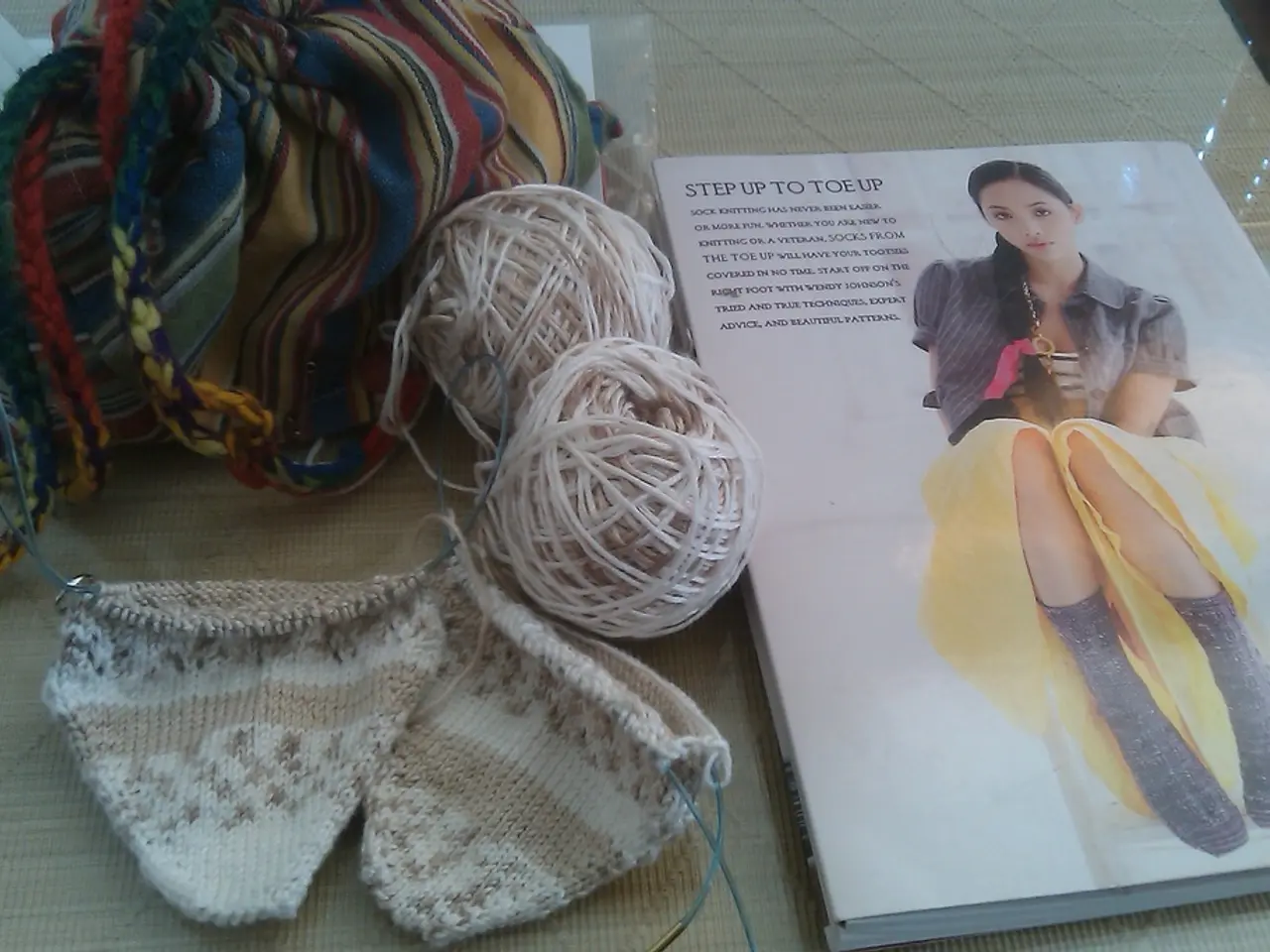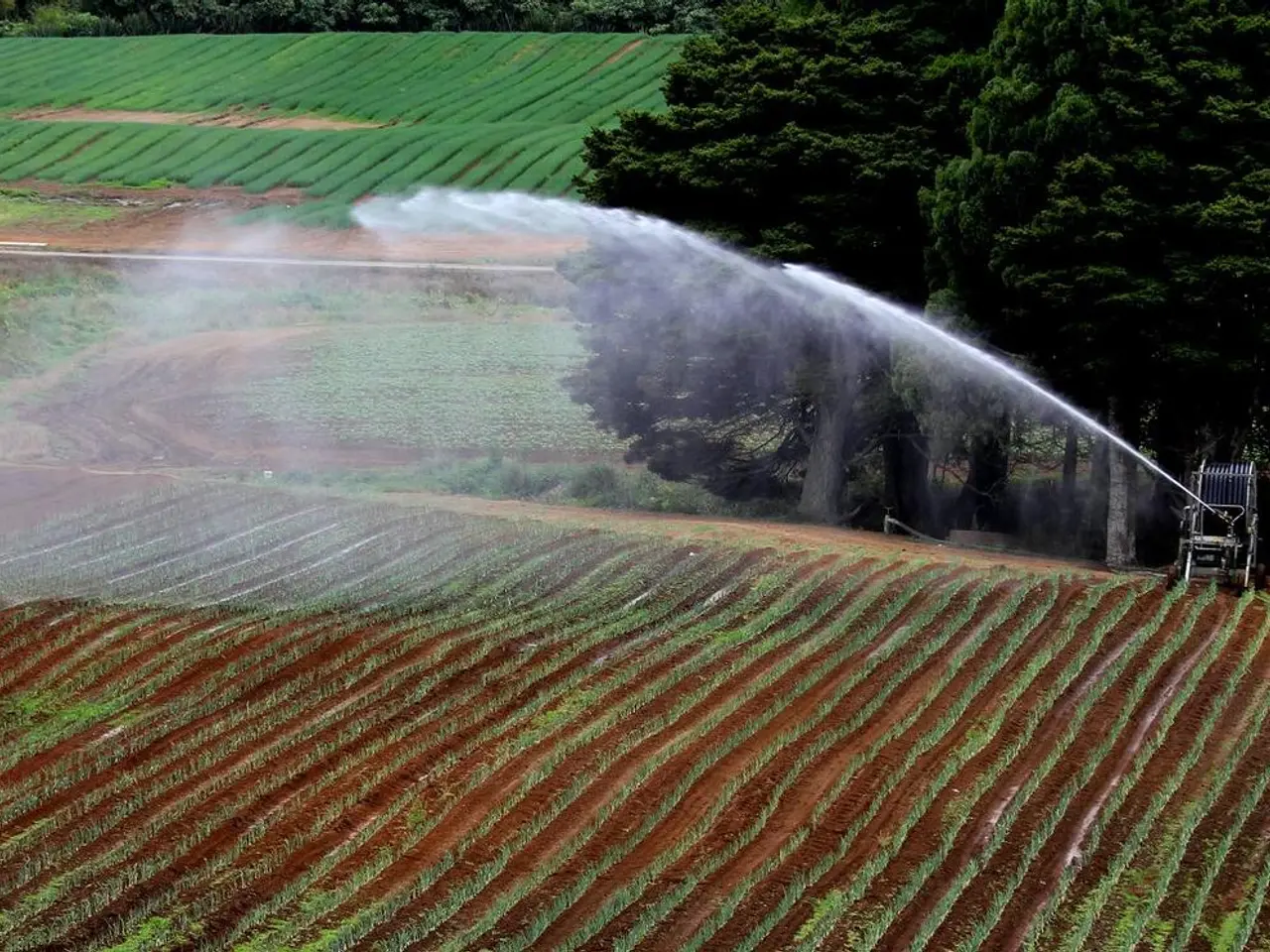Exploring the Ins and Outs of Knitting Craft: Successes and Challenges Encountered
Starting knitting as a beginner can be both enjoyable and rewarding with the right guidance. Here’s a comprehensive overview focusing on essential equipment, key tips for learning, and a suggested beginner project.
## Necessary Equipment
To embark on your knitting journey, you'll need a few basic items. Choose medium-weight (worsted weight, size 4) yarn in acrylic or cotton, and opt for wooden or bamboo knitting needles in sizes 7 to 9 (4.5mm to 5.5mm). These materials are smooth, elastic, and not too slippery, making them ideal for beginners. Don't forget scissors for cutting yarn, a yarn/tapestry needle for weaving in ends, and stitch markers (optional) to help mark stitches as you learn.
For those interested in knitting machines, consider models like the Brother KS40, Silver Reed LK150, or Prym Maxi Knitting Mill for faster, easier projects. Most machines come with basic accessories; you may need additional items like unravel cord, tapestry needle, and machine oil.
## Key Tips for Learning
- Start Simple: Begin with basic stitches like the knit and purl. Master these before moving on to complex patterns. - Practice Consistently: Regular practice helps build muscle memory and confidence. - Watch Tension: Keep yarn tension even but not too tight to avoid difficult stitches and frustrating results. - Learn to Fix Mistakes: Learning how to pick up dropped stitches is essential. - Follow Tutorials: Use online videos, free patterns, or knitting manuals for step-by-step instructions. - Choose Comfortable Tools: Use needles and yarn that are comfortable for your hands and easy to handle. - Don’t Rush: Take your time to understand each step; speed will come with practice.
## Suggested Beginner Project
### Scarf or Dishcloth
Choose a simple project to kickstart your knitting adventure. A scarf or dishcloth is perfect, as it requires only basic knit and purl stitches. You'll need 1–2 skeins of worsted weight acrylic or cotton yarn, size 8 (5mm) knitting needles, scissors, and a yarn needle.
Follow these instructions for a basic scarf:
1. **Cast On**: Start with 20–40 stitches, depending on desired width. 2. **Knit Every Row**: For a garter stitch scarf, simply knit every row until the scarf reaches your preferred length. 3. **Bind Off**: Once long enough, bind off all stitches. 4. **Weave in Ends**: Use a yarn needle to weave in ends at the beginning and end of the scarf.
With the right equipment, a focus on the basics, and simple projects, you’ll be well on your way to becoming a confident knitter. Consistency in knitting is essential for improvement, and using music during knitting can enhance the learning process. Don't forget that mistakes are a part of the knitting process and are essential for learning.
Maintain a positive attitude towards mistakes, and remember that with practice, your skills will improve. Happy knitting!
- For a beginners' adventure in knitting, one should consider equipping themselves with medium-weight yarn, knitting needles, scissors, and other essential tools.
- Acrylic or cotton yarn, wooden or bamboo knitting needles in sizes 7 to 9, and accessories like stitch markers, yarn/tapestry needle, and scissors are suitable for beginners due to their smoothness and ease of handling.
- If you're intrigued by knitting machines, consider models like the Brother KS40, Silver Reed LK150, or Prym Maxi Knitting Mill, which offer faster, easier projects with basic accessories included.
- As a beginner, start simple by learning basic stitches like knit and purl, practicing consistently, and mastering the art of fixing mistakes. A suggested project could be a scarf or dishcloth that requires only these basic stitches.




